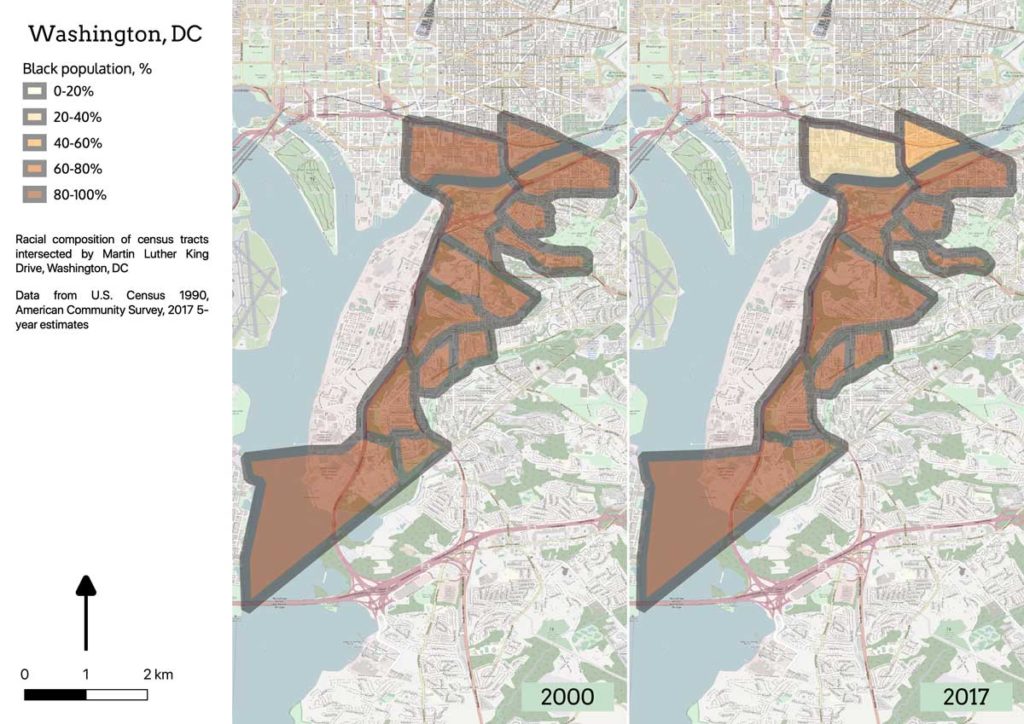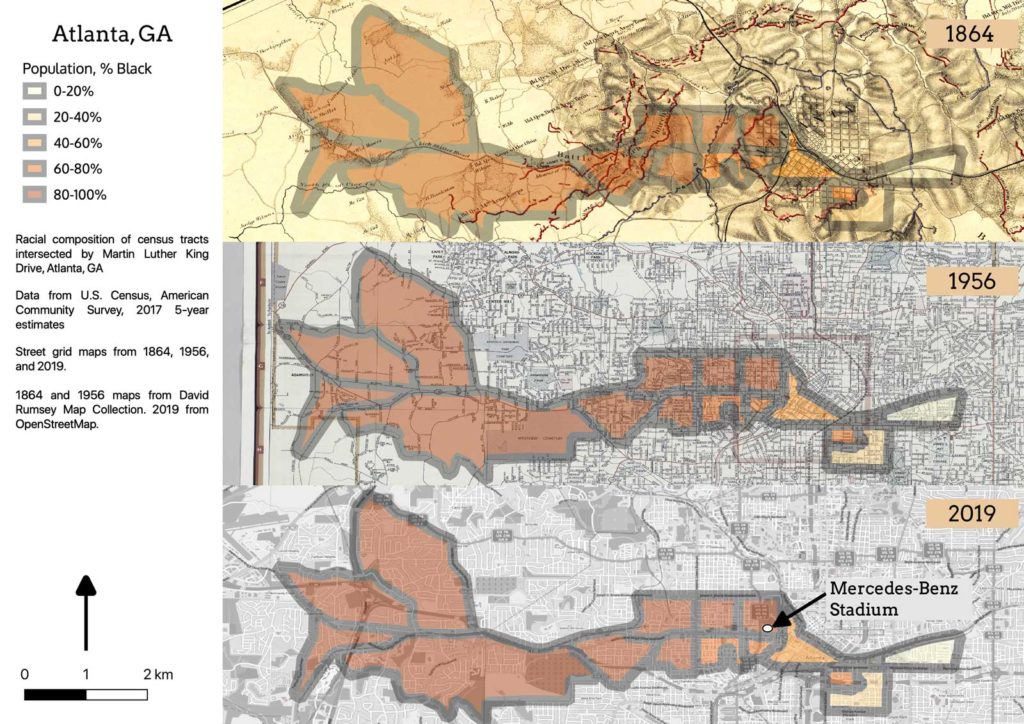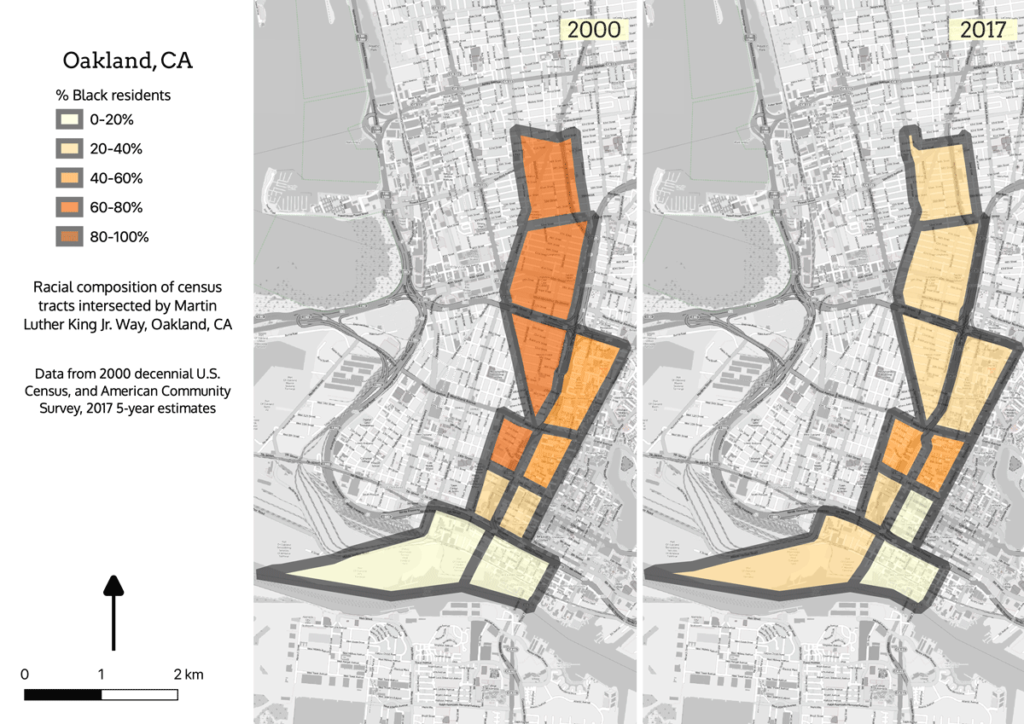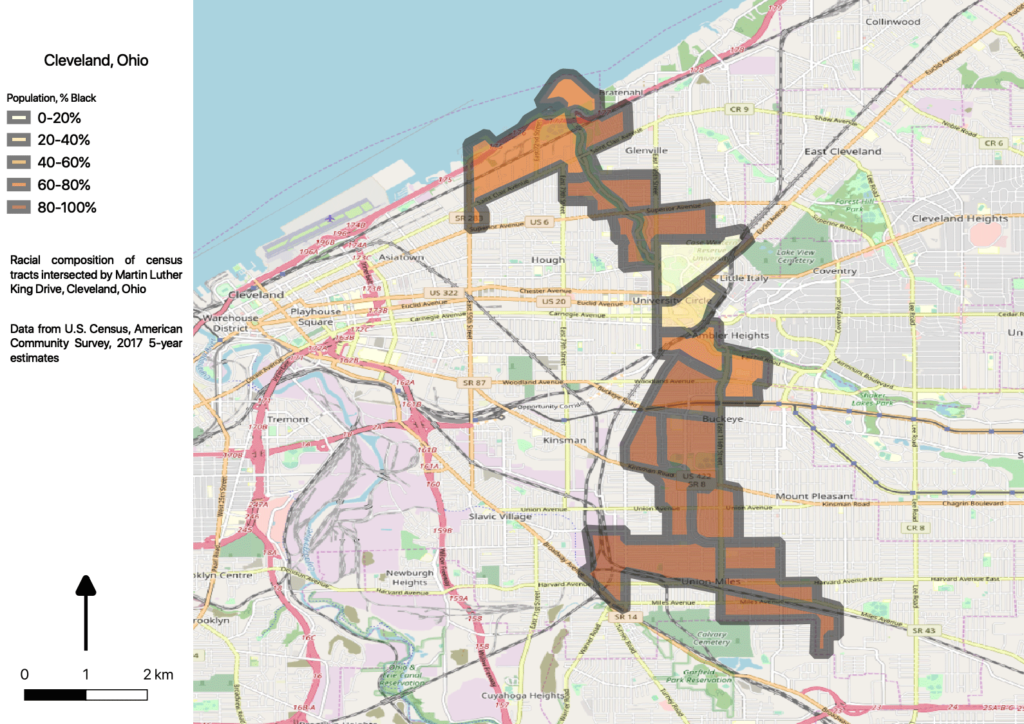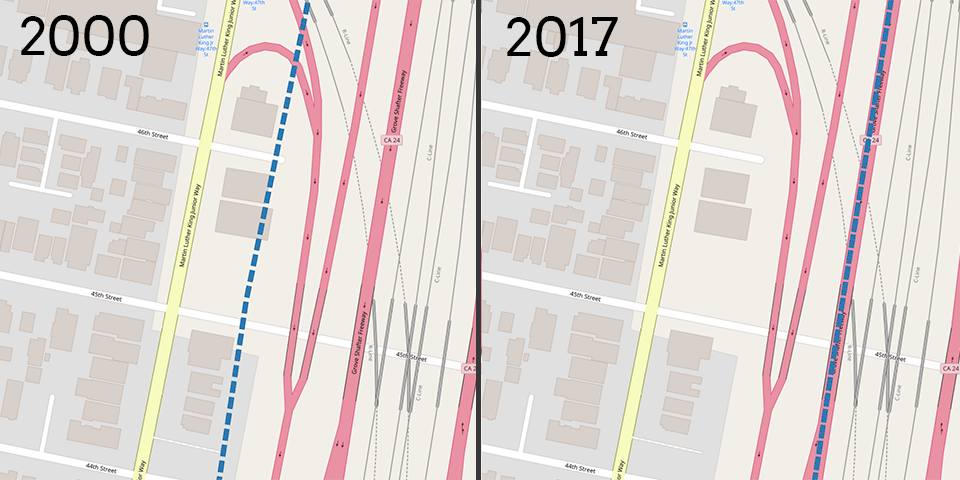MLK Way part 6: Development without displacement
The Holy Grail of community economic development is “development without displacement”: reinvestment in decayed neighborhoods which can provide long-time residents with new opportunities, without forcing them from their homes. It’s hard to achieve in a market-driven society, especially one where home ownership rates and household wealth are as wildly disparate as they are here in America. But it’s not impossible; six cities in the study qualify.

